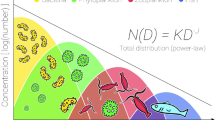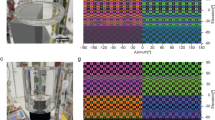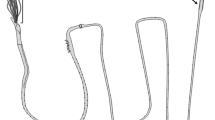Abstract
A sea otter, Enhydra lutris, was trained to select the larger of two disks simultaneously presented under water, and its ability to discriminate between disks of nearly the same size was tested. The results provide an index of visual acuity, and suggest that Enhydra has slightly poorer underwater vision than Zalophus or Phoca.
This is a preview of subscription content, access via your institution
Access options
Subscribe to this journal
Receive 51 print issues and online access
$199.00 per year
only $3.90 per issue
Buy this article
- Purchase on SpringerLink
- Instant access to full article PDF
Prices may be subject to local taxes which are calculated during checkout
Similar content being viewed by others
References
Schusterman, R. J., Kellogg, W. N., and Rice, C. E., Science, 147, 1594 (1965).
Feinstein, S. H., and Rice, C. E., Psychon. Sci., 4, 379 (1966).
Mitchell, E., J. Fish Res. Bd. Canad., 23, 1897 (1966).
Kenyon, K. W., The Sea Otter, Smith. Inst. Wash. Rep., 1958, 399 (1959).
Guilford, J. P., Psychometric Methods, 597 (McGraw–Hill, New York, 1954).
Peterson, R. S., and Bartholomew, G. A., Natural History and Behavior of the California Sea Lion, 80 (Amer. Soc. Mammalogists, Spec. Publ. No. 1, 1967).
Author information
Authors and Affiliations
Rights and permissions
About this article
Cite this article
GENTRY, R., PETERSON, R. Underwater Vision of the Sea Otter. Nature 216, 435–436 (1967). https://doi.org/10.1038/216435a0
Received:
Published:
Issue date:
DOI: https://doi.org/10.1038/216435a0
This article is cited by
-
Adaptations for amphibious vision in sea otters (Enhydra lutris): structural and functional observations
Journal of Comparative Physiology A (2020)
-
The influence of wave exposure on the foraging activity of marine otter, Lontra felina (Molina, 1782) (Carnivora: Mustelidae) in northern Chile
Journal of Ethology (2007)
-
Amphibious Nature of Visual Acuity in the Asian “Clawless” Otter
Nature (1973)
-
Underwater and Aerial Visual Acuity in the Asian “Clawless” Otter (Amblonyx cineria cineria)
Nature (1971)



